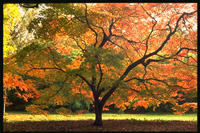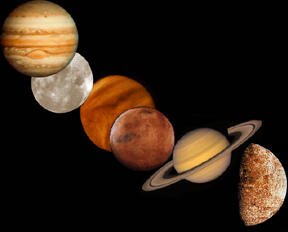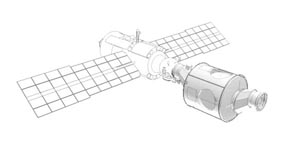Image of the International Space Station's current configuration. The
Russian Zarya control module is on the left and the U. S. Unity
connection node is on the right.
Click on image for full size
Image courtesy of NASA
That's No Moon...
News story originally written on March 3, 1999
...it's a space station!
No, it's not something from George Lucas' Star Wars--it's the
International Space Station. The ISS can be seen from the ground as it
orbits the Earth every 90 minutes. NASA has organized a list of when the
ISS can be seen from different
cities
worldwide.
The ISS will be easier to see as pieces are added over the next few
years. The next piece to be added is the Russian service module, which
will be launched in July, 1999. Before that, Discovery will bring
supplies to the station in May, 1999.
You might also be interested in:

It was another exciting and frustrating year for the space science program. It seemed that every step forward led to one backwards. Either way, NASA led the way to a great century of discovery. Unfortunately,
...more
The Space Shuttle Discovery lifted off from Kennedy Space Center on October 29th at 2:19 p.m. EST. The weather was great as Discovery took 8 1/2 minutes to reach orbit. This was the United States' 123rd
...more
A moon was discovered orbiting the asteroid, Eugenia. This is only the second time in history that a satellite has been seen circling an asteroid. A special mirror allowed scientists to find the moon
...more
Will Russia ever put the service module for the International Space Station in space? NASA officials want an answer from the Russian government. The necessary service module is currently waiting to be
...more
A coronal mass ejection (CME) happened on the Sun early last month. The material that was thrown out from this explosion passed the ACE spacecraft. The SWICS instrument on ACE has produced a new and very
...more
J.S. Maini of the Canadian Forest Service called forests the "heart and lungs of the world." This is because forests filter air and water pollution, absorb carbon dioxide, release oxygen, and maintain
...more
In late April through mid-May 2002, all five naked-eye planets are visible at the same time in the night sky! This is includes Mercury which is generally very hard to see. You won't want to miss this!
...more















